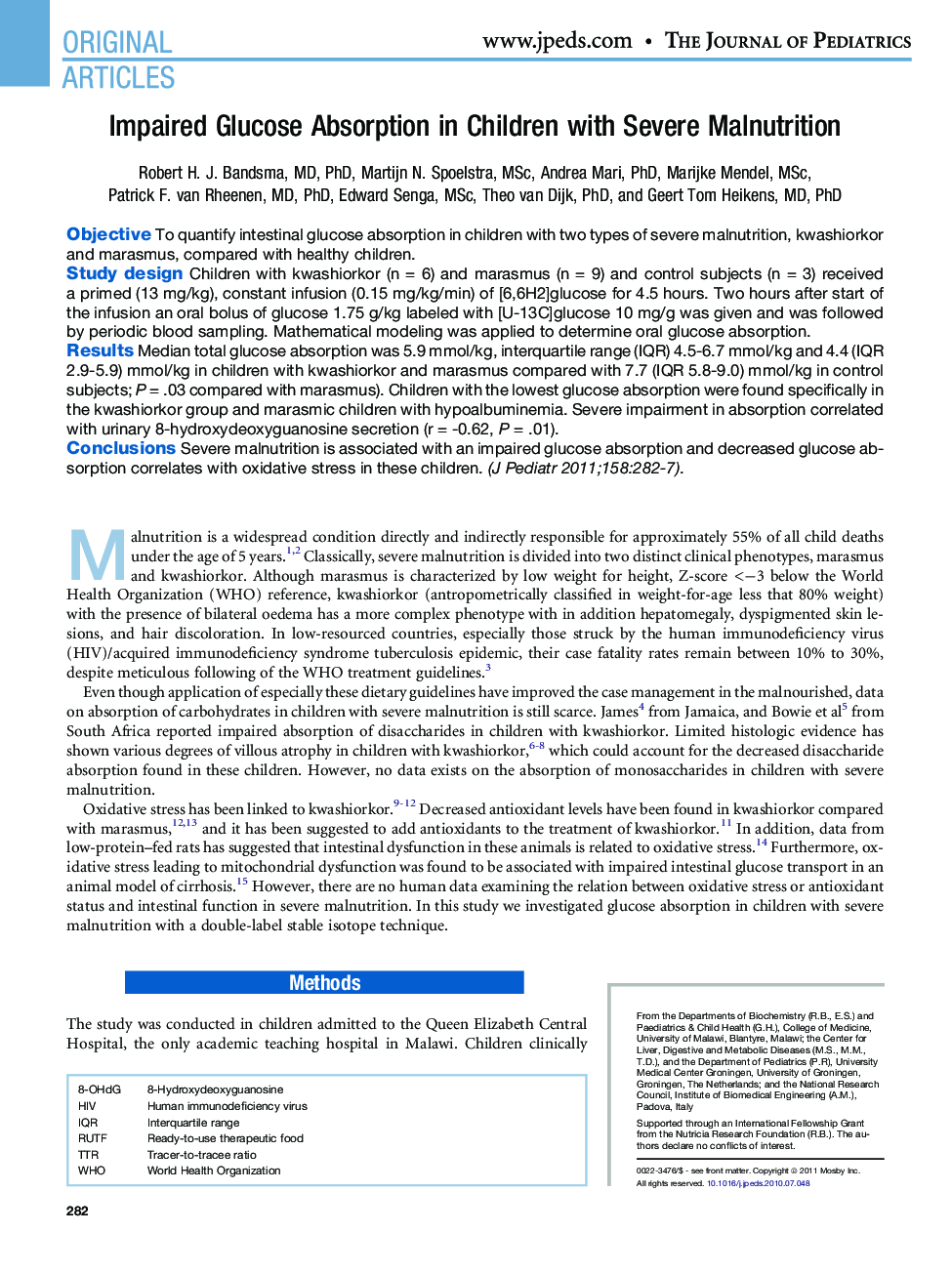| Article ID | Journal | Published Year | Pages | File Type |
|---|---|---|---|---|
| 6225607 | The Journal of Pediatrics | 2011 | 7 Pages |
ObjectiveTo quantify intestinal glucose absorption in children with two types of severe malnutrition, kwashiorkor and marasmus, compared with healthy children.Study designChildren with kwashiorkor (n = 6) and marasmus (n = 9) and control subjects (n = 3) received a primed (13 mg/kg), constant infusion (0.15 mg/kg/min) of [6,6H2]glucose for 4.5 hours. Two hours after start of the infusion an oral bolus of glucose 1.75 g/kg labeled with [U-13C]glucose 10 mg/g was given and was followed by periodic blood sampling. Mathematical modeling was applied to determine oral glucose absorption.ResultsMedian total glucose absorption was 5.9 mmol/kg, interquartile range (IQR) 4.5-6.7 mmol/kg and 4.4 (IQR 2.9-5.9) mmol/kg in children with kwashiorkor and marasmus compared with 7.7 (IQR 5.8-9.0) mmol/kg in control subjects; P = .03 compared with marasmus). Children with the lowest glucose absorption were found specifically in the kwashiorkor group and marasmic children with hypoalbuminemia. Severe impairment in absorption correlated with urinary 8-hydroxydeoxyguanosine secretion (r = -0.62, P = .01).ConclusionsSevere malnutrition is associated with an impaired glucose absorption and decreased glucose absorption correlates with oxidative stress in these children.
